1. The Hidden Dangers of Cheap USB-C Cables: A Real-World Warning
Imagine that you are in a hurry to complete an urgent presentation and your laptop unexpectedly powers down. The culprit? A cheap USB-C cable that not only could not charge your device but in fact destroyed the charging port, and you have to pay 300 to fix it. This is not a far-fetched scenario, but one that occurs more frequently than you would care to imagine and can be completely avoided as long as you have the proper cable knowledge, especially regarding usb c charging cable.
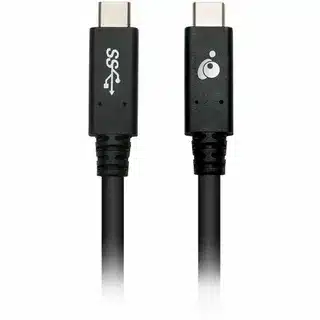
The increase in the use of USB-C has deceived consumers. It is often believed that all USB-C cables perform and are safe since the connector is exactly the same. This risky misunderstanding has resulted in millions of device failures, data corruption, and costly repairs that would otherwise have been prevented by the correct cable choice, including optimal data transfer rates.
According to recent industry reports, millions of dollars’ worth of devices are damaged due to poor-quality USB-C cables every year. Fried charging circuits in smartphones, needing replacement of motherboards in laptops, and more, using cheap cables is much more expensive than any amount of money one might save by using cheaper ones, unlike a durable cable.
2. Understanding USB-C: More Than Just a Universal Connector
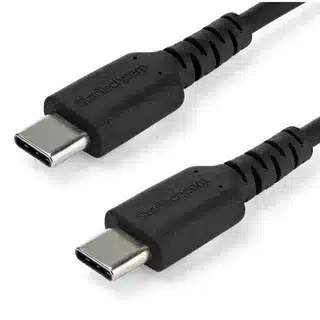
One of the largest cable advances of the past several decades is the USB-C connector. This is the case because it has been the standard of the current electronics since it is designed as reversible, small form factor, and versatile, caused, therefore, to be charged in the shortest time possible. Such a universal designation has been a source of confusion regarding the nature of USB-C, however.
USB-C is not a performance standard, but an essentially connector standard. The small, oval-shaped connector can support various protocols and carry various power levels depending on the internal construction of the cable and what devices it will be connected to. It is both the best and the most confusing attribute of USB-C to consumers, especially in terms of things like strain relief.
All the connectors are 24-pin, which perform certain functions as far as the provision of power and transfer of data are involved, and other support functions like the video outlet. These are complex types of connections, which require high-quality materials and manufacturing tolerance to carry out reliably and safely.
3. Why All USB-C Cables Are Not Created Equal: The Manufacturing Reality
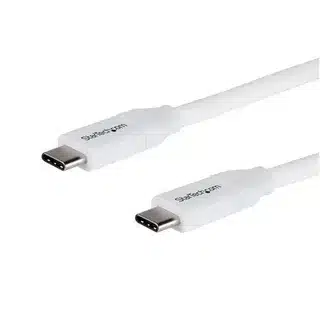
And this is the point most people do not understand: the size of all USB-C connectors is the same, but the performance, safety, and reliability of the cables themselves can be radically different. The slick, reversible connector is everywhere: on laptops, smartphones, tablets, and accessories, but this standardization is superficial.
Most manufacturers have compromised on internal parts, wire size, and safety in order to save on costs. Such trade-offs do not merely slow down the charging or data transfer process–they can be potentially dangerous to your costly electronics. Poor quality cables could have no appropriate voltage regulation, shielding, or critical safety elements, which might lead to overheating or power surges, and could damage your gadgets permanently, particularly devices that also use lightning cables.
The fact is that two cables costing $5 and $25 may appear the same outside; however, their inside makeup and safety measures can be two different worlds. Quality cables are made with oxygen-free copper conductors, with accurate gauge conductors to deliver power, with improved shielding materials, and with high-quality connector production. Poor quality control, thin wires and inferior material are often replaced by budget cables.
4. The Science Behind Cable Quality: Materials and Construction Standards
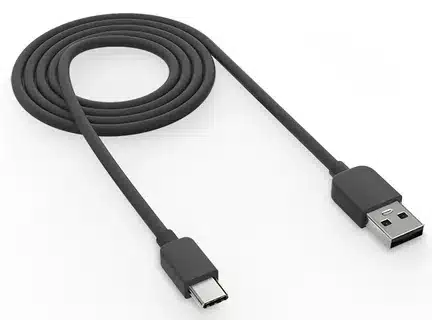
USB-C professional cables contain several key design distinctions that distinguish them from the lower-priced cables. A performance/safety parameter is the conductor material. High-quality cables are made with copper cladding or oxygen-free conductors (OFC), both of which are more electrically conductive and more durable than copper-clad aluminum (CCA) or any other substitute material that low-quality cables use to ensure the highest data transmission rate.
The direct impact of the wire gauge is on the capacity to provide power and safety. A smaller heat generation at a lower resistance is safely conducted by a larger current in a thicker gauge (smaller AWG). Quality USB-C wires with 100W are typically wires with power conductors of 20 AWG, and cheaper wires like Anker cables can contain 24 AWG or smaller conductors, which, when stressed, can easily overheat and become useless.
Shielding technology is used to eliminate EMI and offer stability when transmitting data. High-speed data lines are single pairs that are shielded with high-quality cables with multiple shielding layers, including braided copper shielding, aluminum foil wrapping, and wrapping the separate pairs. Full shielding is applied to avoid deterioration of the signal and the least likely chance of distortion with other electronic equipment.
5. Professional Cable Testing: The Rigorous Standards You Never See
Professional cable testing is an operation that is far more advanced than functionality testing. To ensure that the cable has passed quality check, quality cables undergo resistance tests to evaluate the maximum power delivery, load tests to evaluate whether the cable is capable of delivering 100W of charging power safely, and extensive data and video transmission rate tests.
To test the cables in environments, laboratories subject the cables to vastly different temperatures, ranging between -40 °C and +85 °C. Long-term durability is determined by mechanical testing, thousands of bend cycles, connector insertion/removal tests, and tensile strength tests.
This electromagnetic compatibility (EMC) test is conducted in such a way that the generated cables do not cause excessive interference as well as are not affected by other external interferences. In this testing, it is necessary to make sure that the performance is stable in a multimedia space with electronic devices.
One of the common signs of a good cable is the weight of the cable–the heavier the cable, the higher the probability that it has larger internal copper wire, resulting in less resistance to electricity and heat and longer life. The cables can perform continuously even in strenuous conditions and when highly used.
6. Power Delivery Explained: Understanding Wattage and Safety Margins
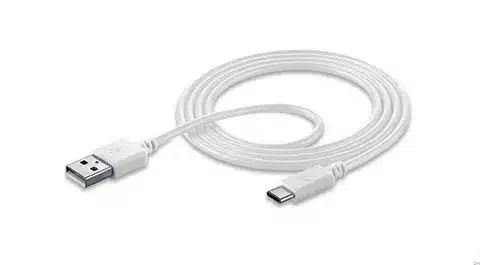
The new power management standard is USB Power Delivery (USB-PD), according to which the devices negotiate the most favourable charge conditions. The system enables transfer of safe power to 100W with a standard USB-C connection, and to 240W in the demanding mode with newer Enhanced Power Range (EPR) standards.
Power delivery is a continual process and is based on continuous communication between the source of power (charger) and the charged device. Under this type of negotiation, the appropriate amount of voltage and current will be provided that will not destroy the devices. However, the basis of this safety system is on the installation of suitable cables with the right resistor value and electronic indicators.
Non-compliant cables can disrupt this negotiation and can even lead to inappropriate power delivery, which will destroy the devices that will be connected to the cables. Quality cables also use precision resistors, and in some of the most power-hungry applications, electronic marker (E-Marker) chips are able to negotiate power delivery correctly.
Understanding the amount of power your device needs would be helpful when determining the correct cables. An average smartphone will require a power of 15-30W, tablets will require 30-65W, and laptops will require at least 65W and above. Cables with a lower rating than your device needs will either charge the device very slowly or not charge at all, but properly rated cables will ensure the device charges as fast as it can.
7. Data Transfer Speeds: Decoding USB Standards and Real-World Performance
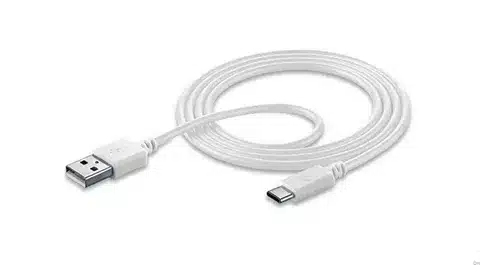
USB-C cables have several data transfer protocols, which vary in speed rating and use. This information gives you an idea of which cables suit your unique needs, and saves you the hassle of buying things you do not even need.
USB 2.0 via USB-C can communicate plain data at 480 Mbps; this is enough to support plain file sharing and plain connections. This is adequate to load and maintain low-bandwidth applications and is limited when large files are to be sent or high-resolution video is required.
USB 3.1 Gen 1 provides 5 Gbps throughput, and USB 3.1 Gen 2 provides 10 Gbps throughput. These speeds are able to handle most of our day-to-day computing needs, like connecting an external disk drive, moderate video editing programs, and typical productivity software.
USB 3.2 standards can run 20 Gbps, and 20 Gbps can support some serious bandwidth to support the applications. This is the level of performance that can support high-resolution external display, high-speed transfer of large files, and professional work systems that require unlimited access to data at high speed.
8. USB4 and Thunderbolt: The Premium Tier of Cable Technology
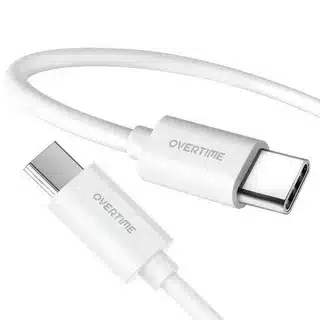
The latest innovation in USB technology is USB4, with a two-way data transfer rate of up to 40 Gbps and full compatibility with Thunderbolt 3 and Thunderbolt 4. The consequence of such standardization is one standard that is compatible with the greatest number of performance requirements.
Thunderbolt technology, originally developed by Intel, not only enables high-speed data transfer but can also be used to daisy-chain multiple devices, connect multiple high-resolution displays, and provide a full 100W power usage capacity at the same time. The introduction of Thunderbolt capabilities to USB4 adds these pro-level features to even more devices and applications.
USB4 and Thunderbolt cables are far more technical than normal USB-C designs. These cables require very much impendence control, signal conditioning, and electronic complicated components to ensure that the signals are not undress at high rates.
USB4/Thunderbolt cables offer future-proofing benefits and maximum potential performance to customers with suitable equipment. These quality cables are more costly and may not even be of use when linked to other gadgets that may not support the higher protocols.
9. Video and Display Capabilities: Beyond Data and Power
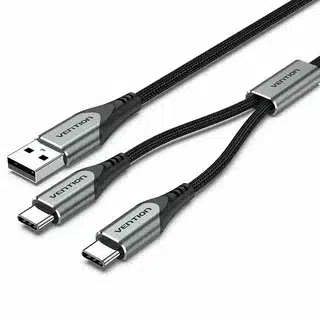
Video signals can be supported by USB-C cables in a variety of alternate modes, most commonly the DisplayPort Alternate Mode. This could allow a single USB-C cable to charge a laptop, move data, and power an external display at resolutions of up to 4K (or even 8K in a few cases).
Video transmission capability will be based on how the cable is constructed, and the alternate mode protocols of the respective devices to which the cable is connected. Properly constructed cables with high signal integrity can provide increased resolutions and increased refresh rates, but improperly constructed cables will create visual artifacts, signal dropouts, or even total display failure.
There is a need to know the relationship between cable length and video performance. The longer the cable, the greater the loss of the signal, and consequently, the maximum resolution or refresh rate can be limited. In display applications with high quality, shorter display cables tend to be more useful than longer, lower-quality display cables.
The ability to deliver video, data, and power in a single cable is one of the most impressive aspects of USB-C, but it puts an additional burden on the quality of the cable and design. Any elements that affect the cable construction negatively will affect all the functions and therefore more crucial when selecting quality.
10. Top Cable Recommendations: Expert-Tested Performance Leaders
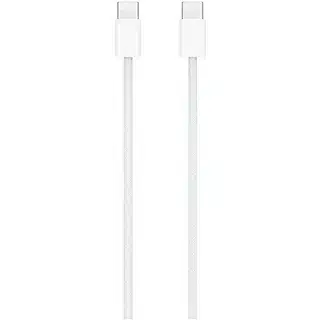
Cable Matters 6-foot USB-C Cable
USB-C cables can carry video signals in most alternate modes, the most common being DisplayPort Alternate Mode. This can allow a single USB-C cable to recharge a laptop, transfer data, and power an external display at up to 4K (or even 8K in some cases).
Video transmission capability will be reliant on how the cable is built and the various alternate mode protocols applied by the devices that are attached to the cable. With good signal integrity and good cable quality, many additional resolutions and higher refresh rates can be achieved, although poor quality cables can result in visual artifacts and signal dropouts or even cause the display to shut down entirely.
There should be a knowledge of the relation between cable length with video performance. Maximum resolution or refresh rate could be limited by the longer the cable, as the signal starts to be degraded. In superior quality display applications, display cables that are shorter tend to perform better than longer display cables of lower quality.
One of the most impressive features of USB-C is video, data, and power delivery as a single cable, but this also demands a higher level of cable quality and design. Anything that undermines the cable construction will undermine all the functions and therefore is more important when selecting quality.
Cable Matters USB4 2.6-foot Cable
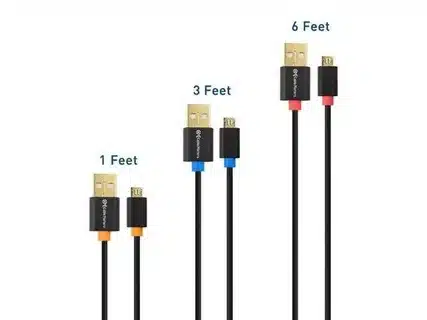
It is the best USB-C cable with USB4 rating for those users who need the highest performance. Thunderbolt, the high rate required to drive the high resolution displays and the high speed file transfer, is the same 100W charge rate, 40 Gbps. The quality of construction is excellent, and the shorter length and firmer structure of the cable may limit its use in some designs.
The sense of the high-quality construction is manifested in the touch and the precision of the connectors of the cable. Signal integrity test shows high performance throughout the full range of 40 Gbps bandwidth with extremely low signal degradation even when stressed. This cable represents the highest possible performance and interoperability in the future.
11. Budget-Friendly Alternatives: When Compromise Makes Sense
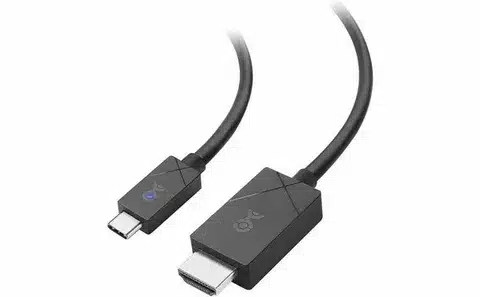
Premium cables perform the best and offer the highest safety margins, yet with the availability of a good selection, users with a smaller budget are also able to obtain good cables. A very good speed performance can be achieved with shorter cables of known manufacturers since the signal degradation at shorter lengths is less, although the quality of the construction may vary widely in this group.
Low-cost options are available to meet basic charging needs, but the user should expect far lower data transfer rates–usually limited to the 480 Mbps of USB 2.0 throughput. These types of cables may be compatible with smartphone charging or rudimentary connection needs, but do not impress a person who needs to transfer data at a high rate or get access to video information.
When considering a low-budget product, seek a product of an established brand with clear specifications rather than a generic product whose marketing claims cannot be specified. Even in the low-end niche, we find manufacturers of medium quality and those that mercilessly cut corners to achieve the lowest possible price.
The secret in choosing budget cable is to identify the cable capabilities that best suit what you really need. A budget cable, of the proper grade, may be adequate, provided that you need no more than the bare minimum of charging facilities. But the very idea of laying budget cables in difficult working conditions can lead to inefficient activity, and even to danger.
12. Identifying Dangerous Cables: Red Flags and Warning Signs
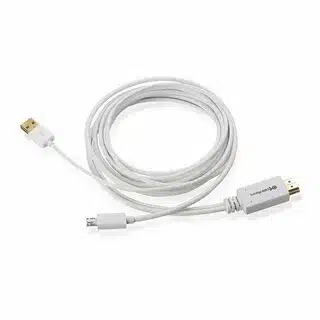
Cables that are not broken are not always the most dangerous; they just do not perform well. The non-compliant USB-C-USB-A adaptors are particularly hazardous since there are no current-limiting resistors. These cables can attempt to steal more power than older USB-A ports are capable of, and can break both the port and the devices connected to it.
Other outcomes of industry testing campaigns are the discovery of numerous unsafe cables that failed to meet minimum safety standards, and increased rigidity and consumer awareness. Improper products still find their way to market, but particularly through discount retailing and malicious internet shops.
Lightweight construction, no certification label, extremely low prices, and non-fitting connectors are the danger signals. Once the USB-C cable appears weak or wiggly during insertion, the cable is likely losing its functionality and security. Cables should be capable of fitting in the USB-C ports, without needing to be pressed or allowing too much wiggle.
The other red flags are cables that may become too hot during use, sporadic connections, or cables that cause devices attached to them to fail. All these symptoms can be used to show that there are some safety concerns that need to be addressed, and the cable should be changed immediately.
13. Certification and Compliance: Understanding Standards and Markings
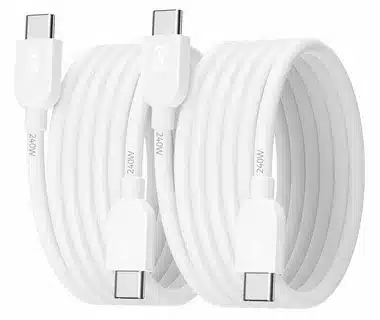
Certified USB-C cables are subjected to tests to ensure they are industry-compliant. Performance and safety properties of cables are also certified in official certification programs offered by the USB Implementers Forum (USB-IF). Certified cables are specially given identification numbers and approved marketing statements.
Identify cables with specifications, supported data speeds, displayed power delivery rates, and certification. Such specifications are publicly stated by well-known manufacturers, and technical documentation of their products is also well-documented.
Take caution with cables whose marketing statements are imprecise or exaggerated. The term ultra-fast may be employed in situations where the product has not undergone a proper testing and certification process. The term premium quality may be employed in situations where no technical specifications are achieved. Authentic high-performance cables will show what their USB 3.2, USB4, or Thunderbolt compliance levels are.
Cables are safety tested in their intended applications with good regulatory labels on them (FCC, CE, or UL marks). Though these marks do not mean performance, the absence of them suggests products that are not designed according to the minimum safety standards.
14. Length Considerations: Balancing Convenience and Performance
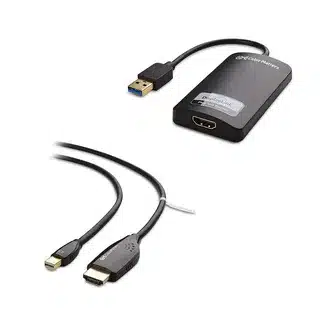
The cable length has a significant impact on the safety and performance characteristics of the cable. Final cables at the receiving end are longer, and accordingly, the voltage drop across the opposition of the conductor is greater, and probably it has a role in the speedy technique of charge and the action in the conveyance delivers power. They also suffer more signal degradation, which can lower data transfer speed or video resolution.
At high power delivery loads, voltage drop is of concern. What may be a functional cable at 30W may not work at all at 100W, as the voltage drop would be excessive at longer distances. Of chief concern here is the application in laptop charging, where power must be available at all times.
This is true of the longer cables that are used to send data. High-speed signals are range-restrictive and can cause reduced transfer rate, high error rate, or complete failure of communication. Thunderbolt and USB4 protocols are cable length sensitive, with some 40 Gbps cables having a practical maximum length of at most 2 meters or so to operate well.
The best choice is to select a cable of the shortest length based on your practical needs. It is the most effective way to make the system work better and minimize potential issues. An active cable containing signal conditioning electronics may be worth consideration when longer connections are needed to ensure operation at higher distances.
15. E-Marker Technology: The Smart Components in Advanced Cables
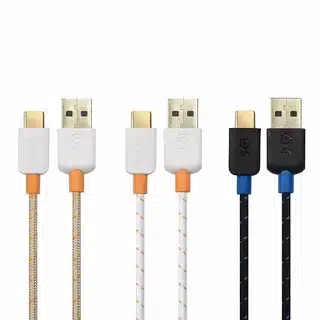
The E-Marker (E-Marker) chips are the next-generation high-specification USB-C cables. The smart devices enable smart communication of the power sources and power devices through which optimum and safe provision of power is attained. Cables with higher power transfer of above 60W and or higher data transfer rate of 20 Gbps would need e-Markers.
The E-marker chip contains the precious cable data, including the highest power rating, data speed capability, and safety properties. This information can be sent to the devices to negotiate the correct power and data transfer parameters automatically when the devices are in contact with each other via an E-Marker cable.
The technology is used to prevent unsafe conditions, whereby equipment can desire to draw excess power over poorly rated cables. The E-Marker also maintains the power delivery negotiation within a safe working temperature of the specific cable being used, which provides additional protection for more expensive electronics.
The cost of e-Marker technology quality cables is usually more than the cost of simple ones, but the safety and performance benefits of the technology far outweigh those of simple ones. The availability of E-Marker chips is generally a sign of a better level of overall level of construction and design focus micro usb.
16. Brand Reliability: Choosing Manufacturers You Can Trust
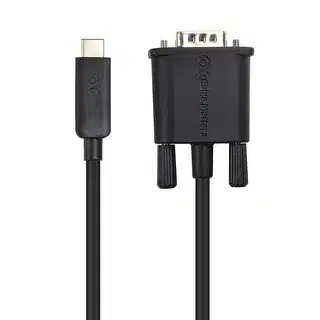
Well-established cable companies spend a lot of money on quality control measures, testing, and customer service systems. These companies know their reputation is tied to the quality of their products being consistent, and are more willing to offer meaningful warranties and technical support to stand behind their products C to USB.
The large technology firms such as Apple, Google, and Samsung are making their own USB-C cables that fit their products. These cables can sometimes be more expensive than third-party options, but they are guaranteed to work and perform with their respective ecosystems.
A few specialized cable manufacturers like Cable Matters, Anker, and Belkin dedicate their efforts to connectivity products and generally offer good value with streamlined designs and intensive testing. Such businesses usually include specifications in technical detail, and they provide customer-friendly services Belkin USB.
Do not use generic or unbranded cables, especially those of unknown manufacturers or dubious sellers on the Internet. These products are not always properly quality-controlled, and they may not even correspond to the minimum safety requirements for basic charging cables. The minimal savings of using generic cables may soon be erased when they damage a device or need to be replaced regularly, especially if you require faster charge rates.
17. Real-World Testing Results: Performance Under Actual Use Conditions
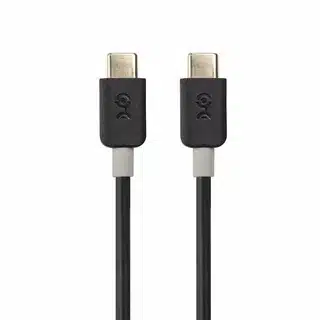
Laboratory testing is very valuable in terms of getting a baseline, but real-world performance usually teaches us more about cable quality and reliability. Long-term durability tests demonstrate the performance of cables after months or years of normal operation, connector wear, cable flex fatigue, and exposure effects.
In demanding applications, temperature performance is critical. Quality cables are designed to perform consistently over a broad temperature range, whereas substandard cables can perform poorly or be unsafe when pushed to the extremes of temperature found in automotive or outdoor use.
Real-world electromagnetic interference (EMI) testing demonstrates the way cables will function when they are in the presence of other electronics. Poor shielding of low-cost cables may lead to interference with Wi-Fi networks, Bluetooth connections, or other sensitive electronic devices, whereas quality cables are kept clean even in electrically noisy locations.
Compatibility testing with a wide range of device combinations usually demonstrates the problems that cannot be observed when only one device is tested. Certain cables can be effective with certain devices, but not with other devices, because of differences in how power is delivered or communicated.
18. Future-Proofing Your Cable Investment: Emerging Standards and Technologies
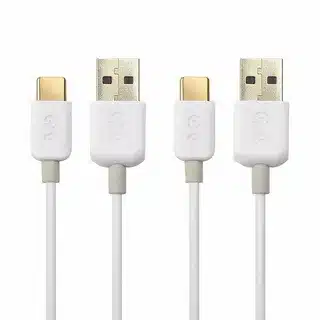
The USB-C ecosystem keeps gaining momentum, and the list of new standards and capabilities is growing steadily. USB4 Version 2.0 has reached speeds of 80 Gbps, and Enhanced Power Range (EPR) features allow delivering up to 240W of power to the most demanding applications.
High-quality cables with the current best specifications will frequently be compatible with the next generation of devices. USB4 cables, such as those, are backward compatible with all older USB standards and provide the highest level of performance currently in use.
But weigh future-proofing needs against present needs and constraints. Very high-end cables might not have direct advantages when your existing equipment does not exploit them, so in many cases, mid-range cables are more practical.
When choosing cables, think about your average device upgrade cycle. When you upgrade devices every few years, it can make economic sense to invest in high-quality cables that will accommodate a variety of devices. Less frequent upgrading users might want to align cable capability to more closely match the present requirements.
19. Troubleshooting Common Cable Issues: Diagnosis and Solutions
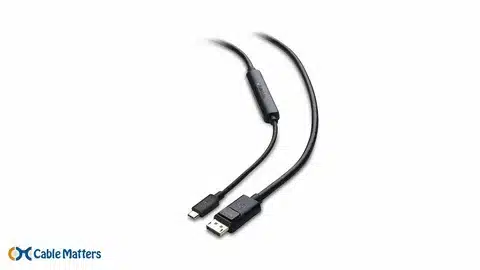
Periodic connectivity issues may reflect a loose connection or corroded connector and internal conductor loss. These can be in the form of intermittent problems in charging, intermittent data transfer problems, or intermittent loss of video signals. It can be beneficial to test ports and devices to determine whether the issue is in the cable or the equipment that was connected to it.
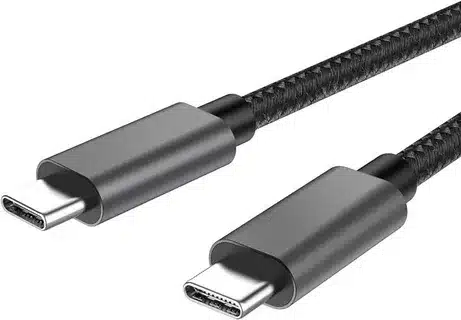
Slowness could be any of the following factors: cable resistance, power source limits, or power control of the equipment. The charging performance of the cables will be compared with known good cables to determine whether the cable was the limiting factor. Note that some devices will intentionally slow down the charging rates based on temperature, battery charge, or type of power source.
The problem of data transfers may be in the form of a slow pace of internet connection, a great number of failures, or complete inability to perform the transfer. These problems are sometimes related to the inappropriate signal integrity of the cable or the incompatibility of the protocol implementation. It may be helpful to use testing files of varying size and file transfer types to define the scope of the problem.
Cables that are heated aggressively are areas of serious concern that should be taken care of. Uncharacteristic heat generation under normal operation indicates that the present carrying capacity or internal resistance is lower than required. Removal and replacement with new appropriately rated cables is necessary to prevent damaging a device or creating a safety hazard.
20. Making the Smart Purchase Decision: Cost vs. Value Analysis
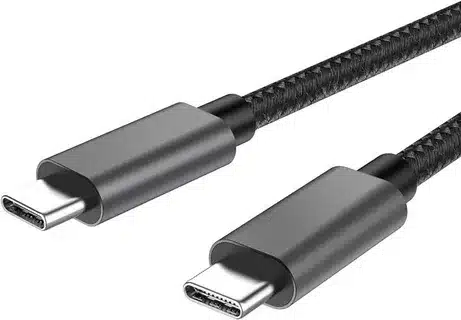
Quality USB-C cables are a life, performance, and safety investment in the device. Premium cables cost more; however, they are likely to be more useful in the long run due to their greater reliability, extended life, and increased performance. The variance between the cost of good cables and less expensive choices does not exceed 10-30 dollars, which is insignificant compared to the potential costs of fixing a damaged device.
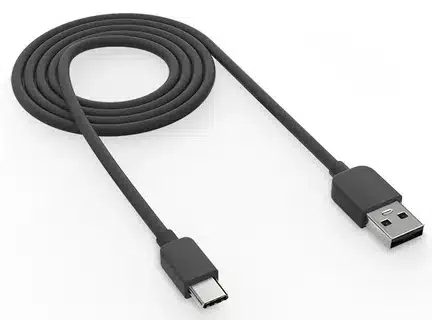
When you are making cable decisions, consider your system value as a whole. It only makes financial sense to use a ten-dollar cable to safeguard a computer worth $1500, but the same can be said about smartphone and tablet usage. The cable investment is relatively small and offers a lot of protection to far more expensive devices.
Select the match cable specification based on actual requirements as opposed to selecting the highest-specification option automatically. An essential charging cable can be sufficient to meet the simplest needs, whereas professional workflows that demand transferring data at an extremely quick rate should be accompanied by extra cable expenditures.
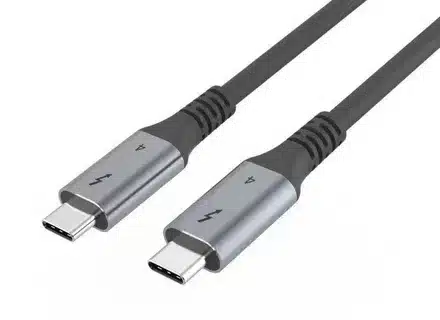
Consider both usage patterns and the environmental conditions in choosing cables. Mobile cables can often be designed with superior durability, which is essential for charging phones. whereas permanent structures can be designed with cost-efficiency rather than maximum ruggedness. Knowing your application case is useful in optimizing the cost-to-benefit ratio.
Conclusion: Protecting Your Technology Investment Through Smart Cable Choices
USB-C cable market provides chances and traps to the people who search for the best and danger-free connection cables. Despite the simplicity of the concept of the universal connector design, the reality is that there are complex technical requirements and various quality features, even in such products as Amazon Basics, and high safety demands that can influence the expensive electronic devices.
Good cables provide multiple levels of security to your technology investments. These also contain proper safety provisions, are adequately tested, and made of quality materials that can be trusted to perform effectively over time. This relatively small difference in price between quality cables and low-cost alternatives is a trifle against what could happen to the equipment, the cost and time spent in repair, and productivity lost with erratic connections.
The trick with the cable selection is to be aware of what you actually need and match it to the correct cable specifications. Customers with low charging needs do not typically need high-current features like high-speed data transfer or video output, so the top-quality cables with known performance characteristics deserve their premium price tag.
Brand reputation and the associated certification are added assurance to a marketplace full of questionable goods. The biggest manufacturers with a clear technical, full test, and customer-oriented attitude deliver the best combination of performance, safety, and value to the majority of users.
The quality of cables will gain even greater importance when USB-C technology continues to advance. The more powerful and faster new standards require even more cable design and production. Well-designed cables are not only a cost-effective investment today but will also be in the future because of the capability increases as devices advance, especially in usb c connections usb a cable.





